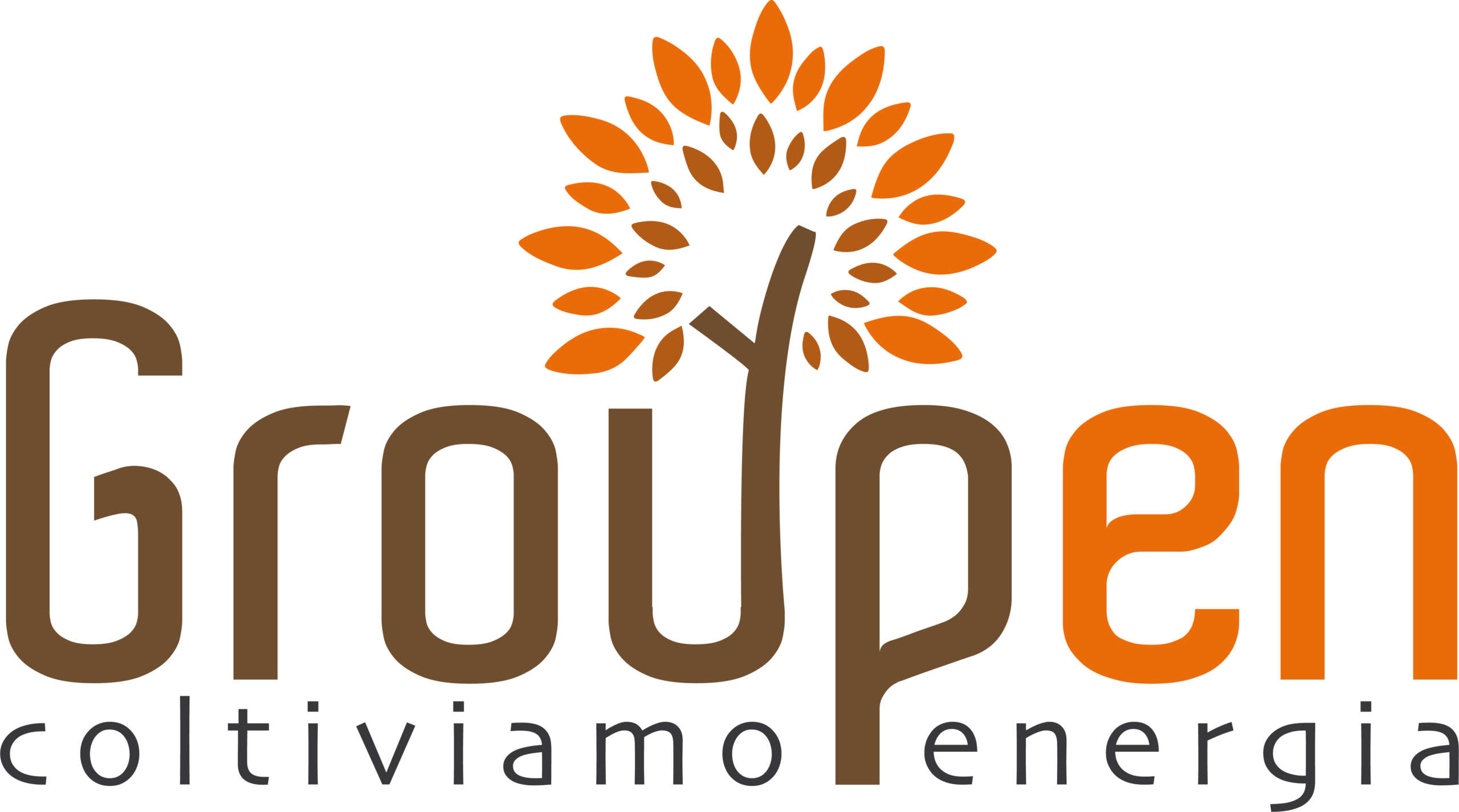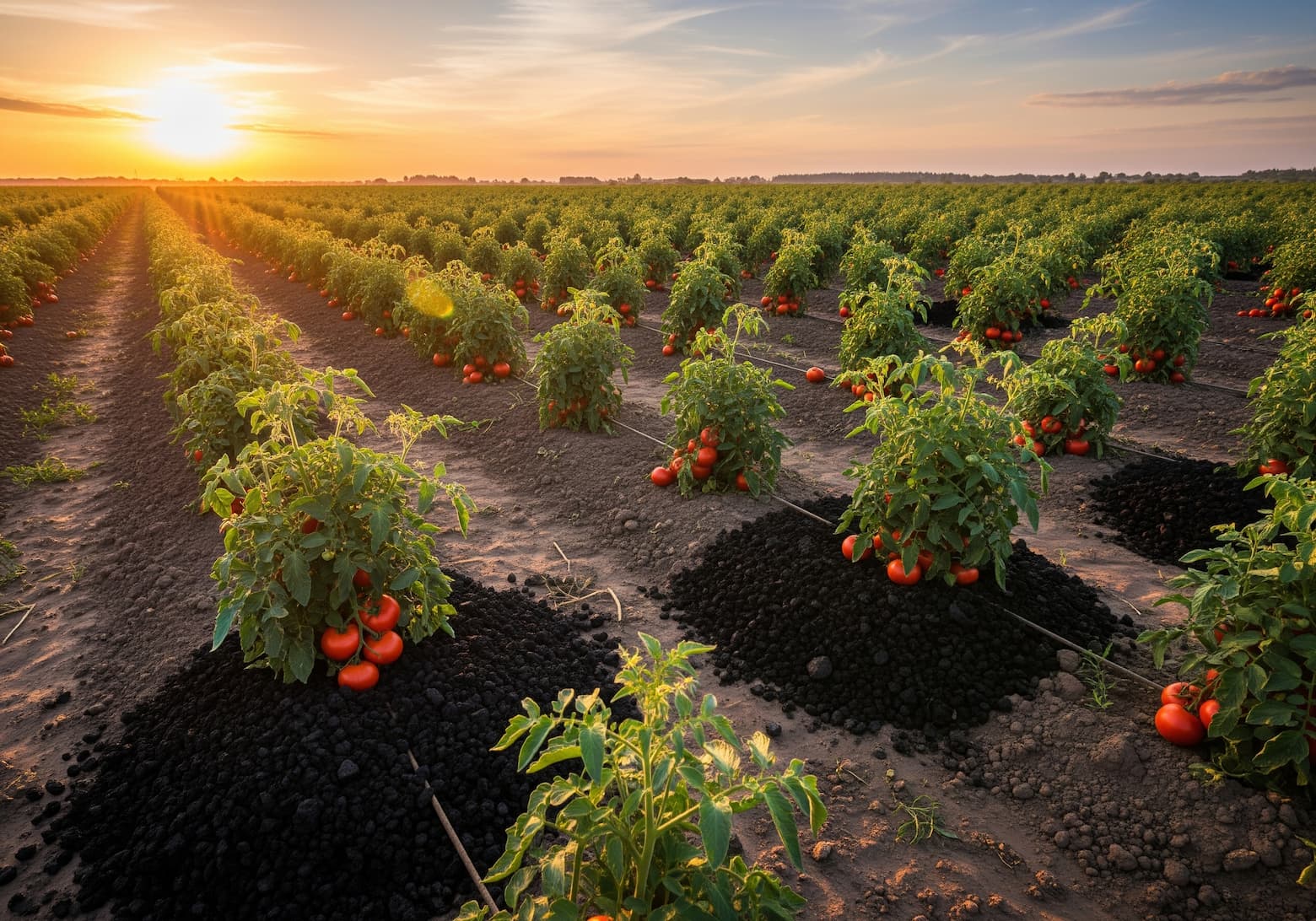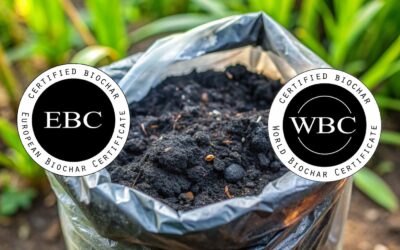Growing high-quality tomatoes not only means having tastier fruit , but also obtaining a higher yield per square meter grown.
If you’re an avid horticulturist or professional farmer, you’ve probably already wondered how to increase productivity without compromising quality.
In this article, you’ll discover 5 advanced techniques, backed by real-world data and experience, that can increase your tomato yield by up to 30% .
1. Improve Soil Fertility with Biochar
Biochar is a vegetable carbon obtained from the controlled pyrolysis of biomass. Several studies show that it improves soil structure, retains water and nutrients, and stimulates microbial life .
- Concrete benefits : greater availability of nitrogen and phosphorus, reduction of leaching, increased water retention.
- Result : tomatoes more resistant to water stress and an increase in yield of up to 15% .
Tip: Mixing biochar with compost before application increases its effectiveness.
2. Drip Irrigation with Smart Sensors
Water is a precious resource, and traditional irrigation often leads to waste. Drip irrigation, controlled by moisture sensors, allows you to deliver just the right amount of water at the right time.
- Reduces water waste by 40%.
- Prevents fungal diseases related to excessive humidity.
- Ensures a constant flow of nutrients to the roots.
In tests on industrial tomato crops, smart systems increased average yields by 20% .
3. Inoculations of Mycorrhizae and Beneficial Bacteria
Tomato roots interact with an invisible network of fungi and bacteria that improve their nutrition.
- Mycorrhizae increase phosphorus absorption .
- Plant growth-promoting bacteria (PGPR) produce natural hormones that stimulate the plant.
The result? More vigorous plants, larger fruits, and greater resistance to environmental stress. Using these inoculants can lead to a 10 to 25% increase in yield .
4. Pruning and Canopy Management
Proper pruning is not just aesthetic: it improves air circulation and light penetration.
- Remove lateral shoots (suckers) to concentrate energy on the fruit.
- Keep 2–3 main stems for optimal balance.
- Control leaf density to reduce disease and increase photosynthesis.
With expert canopy management, tomatoes ripen faster and yields can increase by up to 12% .
5. Fractional and Personalized Fertilization
Instead of applying all the fertilizer at once, dividing it into multiple applications ensures constant nutrient availability.
- Use slow-release fertilizers combined with targeted foliar fertilization.
- Supplement calcium and magnesium to prevent problems such as blossom end rot.
- Adjust fertilization based on soil analysis and growth stage.
A personalized nutritional plan can increase production by up to 30% compared to traditional methods.
Conclusion
Increasing tomato yields isn’t a matter of luck, but of knowledge and targeted practices. Incorporating biochar, smart irrigation, microbial inoculation, strategic pruning, and fractional fertilization can transform your crop, leading to abundant, superior-quality harvests.
Try applying these techniques gradually and monitor the results: you will see that with the right approach your garden or farm can obtain higher yields of up to 30%







